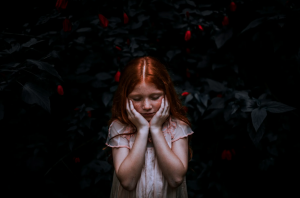Observe and reflect

Overview and learning objectives
Chapter two focuses on supporting positive behaviour from a behavioural perspective. This chapter is organised into:
- Behaviourism, behaviour theory and applied behaviour analysis
- Positive behaviour support
- Thinking functionally about disruptive student behaviour
- The ABCs of behaviour – planning to intervene
- A dual perspective
On successful completion of this chapter, you should be able to:
- Understand key elements of behaviourism, behaviour theory and applied behaviour analysis
- Describe core features and principles of positive behaviour support
- Think functionally about disruptive student behaviour
- Explain the ABCs and their relationship to planning interventions
- View disruptive behaviour through a trauma lens
INTRODUCTION
Positive behaviour support is a proactive and preventative approach to reducing disruptive student behaviour. Applied to the school context it is a continuum of support and intervention that flows from least intensive strategies to most intensive strategies. The strategies employed are founded in and reflect the principles of applied behaviour analysis or a behaviourist perspective but is this alone enough for the child who has experienced trauma and is having difficulty with self-regulation? The current research says “No,” (Chafouleas, Johnson, Overstreet & Santos, 2016; Dorado, Martinez, McArthur & Leibovitz, 2016; Nash, Schlosser & Scarr, 2016; Phifer & Hull, 2016). In this book, we agree, and this is demonstrated in our interdisciplinary approach of providing a blended perspective drawing from psychology and education. Behaviourist strategies are highly effective, evidenced-based strategies that achieve excellent results, for most children. Children with trauma are not most children, they are our most troubled children many of whom will need a more comprehensive approach to support their success at school that combines the best of both worlds of psychology and education.
References
Chafouleas, S. M., Johnson, A. H., Overstreet, S., & Santos. (2016). Toward a blueprint for trauma-informed service delivery in schools. School Mental Health, 8, 144-162. doi: 10.1007/s12310-015-9166-8.
Dorado, J. S., Martinez, M., McArthur, L. E., & Leibovitz, T. (2016). Healthy environments and responses to trauma in schools (HEARTS): A whole school, multi-level, prevention and intervention program for creating trauma-informed, safe and
supportive schools. School Mental Health, 8, 163-176. doi: 10.1007/s12310-016-9177-0.
Nash, P., Schlosser, A., & Scarr, T. (2016). Teachers’ perceptions of disruptive behaviour in schools: a psychological perspective. Emotional and Behavioural Difficulties, 21(2),167-180. doi: 10.1080/13632752.2015.1054670.
Phifer, L.W., & Hull, R. (2016). Helping students heal: Observations of trauma-informed practices in schools. School Mental Health, 8, 201-205. doi: 10.1007/s12310-016-9183-2.

